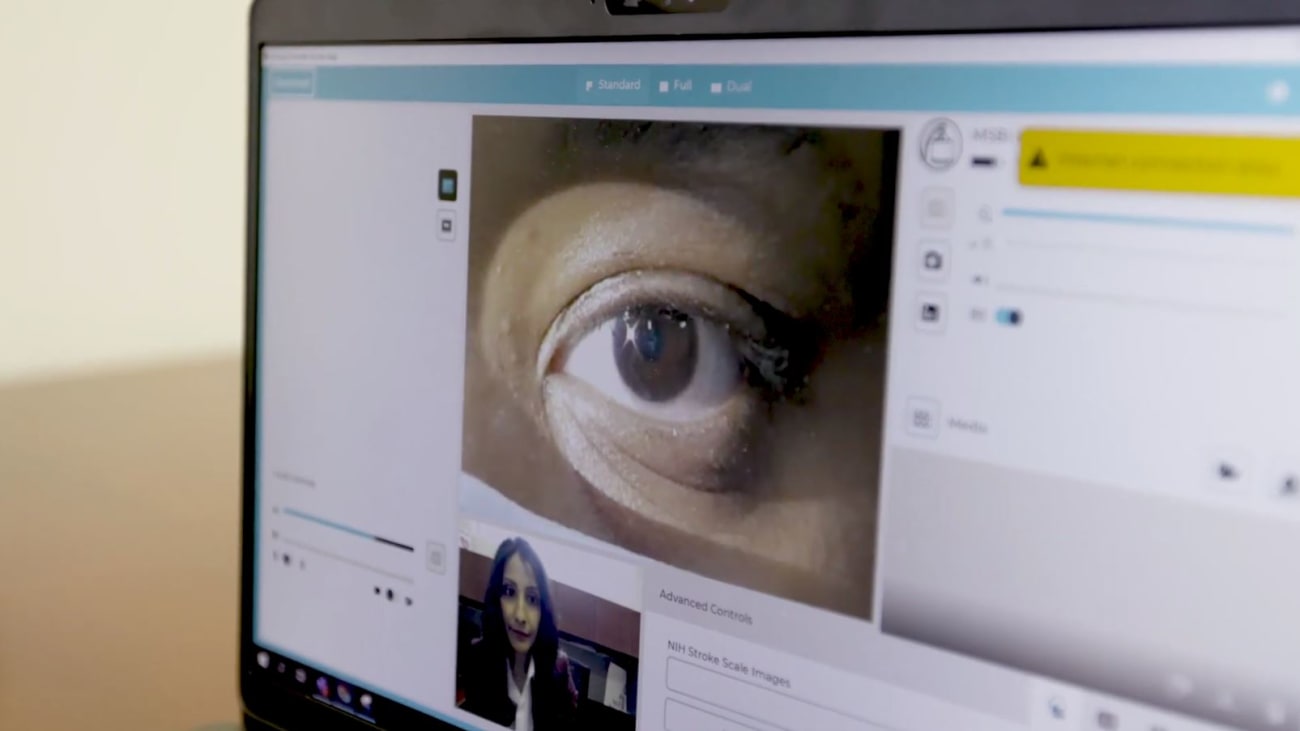From teleconsults in the emergency department to onsite fundus imaging at primary care offices, New York Eye and Ear Infirmary of Mount Sinai (NYEE) is adapting to the rapidly changing health care environment with innovative new applications and technologies and making them a permanent part of our patient service. In addition to allowing greater access to care and quicker and more effective triage of patients, these technologies act as valuable social distancing tools, reducing exposure to COVID-19 for physicians, staff, and patients.
Refer an Ophthalmology Patient
as we go into a new era of medicine where we're faced with pandemics were faced with resource problems we're faced with. Shortages of physicians in rural areas were faced with shortages of physicians even in dense urban areas. We look thio innovation and to really solve some of those problems at New York Eye and Ear Infirmary, we are investing in technology to really help standardize thebe delivery of care. But we're really starting to embrace telemedicine mawr because we don't have that 24 hour good coverage where you could get an ophthalmologist immediately. Telemedicine really bridges that gap. Your car near is remaining at the forefront in a new ophthalmology platform and telemedicine called telly. Ophthalmology consoles on. We are working throughout the Mount Sinai Health System to bring ophthalmology services for patients for present to the emergency department. At two of our sister institutions, Mount Sinai, Morningside and Mount Sinai West, a person might come to the emergency room for an eye condition for multiple reasons. For instance, blurry vision, paying, itching, discharge, redness. When a patient enters the emergency room and they're deemed to need ophthalmology coverages, the doctor will place a telly console order it will route to the ophthalmologist ophthalmologist is then able to review that patient's chart and high resolution photos and imagery to really zoom into the patient's eye to the point that they can see even the Irish scripts of the I. There is a bi directional communication that occurs where you're able thio Talk with the patient. You can even show them what you want them to dio. Once the examination is done, the ophthalmologist in the doctor will discuss the care plane for that patient. That could mean anywhere from admitting the patient thio transferring the patient thio, providing recommendations for the patient. Thio have medications and or follow up. The next day we have set up in ambulatory telemedicine program, where we're screening diabetic patients in primary care offices. We have artificial intelligence for multiple different areas, including visual field readings and fund this photo readings. Artificial intelligence algorithms have been shown to be able to identify diabetic retinopathy and diabetic macular oedema changes. We would like to see these programs screen diabetics earlier before they have severe retinopathy. Telemedicine really accelerated on a global scale during the cove in 19 Pandemic and within ophthalmology, we found new use cases that never existed before 2020 and I think that those experiences will prepare us for what might come in the years ahead.



